
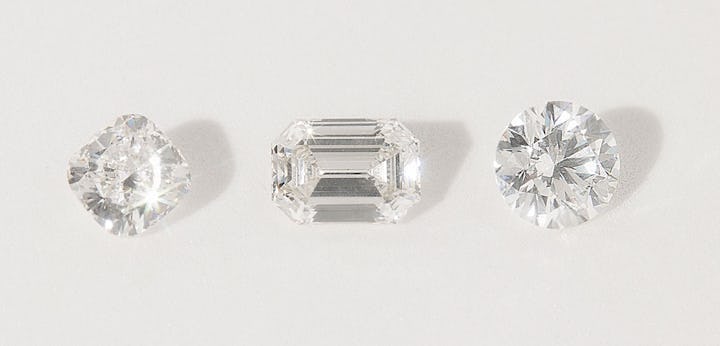
Diamonds Defined: The Ultimate 4Cs Guide
Kimberly Zerkel | October 05, 2023
When searching for the perfect engagement ring or fine jewelry, it’s easy to be distracted by beautiful design and overall aesthetic. But when it comes to finding something truly special, it’s all about the details. Understanding the 4Cs - cut, color, clarity, and carat -is not only a way to help you find the diamond that is right for you, but will also assure you as to its value. We also believe that understanding the ethical practices that sets VRAI created diamonds apart will make your sustainable engagement ring and jewelry feel all the more aligned with your personal values.
An Overview of the 4Cs
Cut
The first C is cut. And the most important to remember about a diamond’s cut is that it is not the same thing as its shape. A diamond’s cut refers to the arrangement of its facets. The cut is considered the most important of the 4Cs because it’s what delivers a diamond’s much-desired brilliance. When a diamond’s proportions are cut to exacting precisions, light enters and exits the diamond through the same surface, the table. Most diamonds are cut into one of three styles: brilliant (a mix of triangular and kite-shaped facets), step (composed of rectangular facets) or mixed (a combination of both brilliant and step cuts). Each cut is evaluated on the diamond’s “face-up” appearance, and its balance of proportions, durability, polish, and symmetry.
Our cutting and polishing studios are full of true artisans and all of our diamonds sustainably created in our own zero-emission foundry are inspected more than 1,300 times from when the diamond seed is placed into a reactor to the finished ring. VRAI created diamonds are cut to perfect proportions and are graded on a scale ranging from Ideal + Hearts, Ideal, and Excellent.
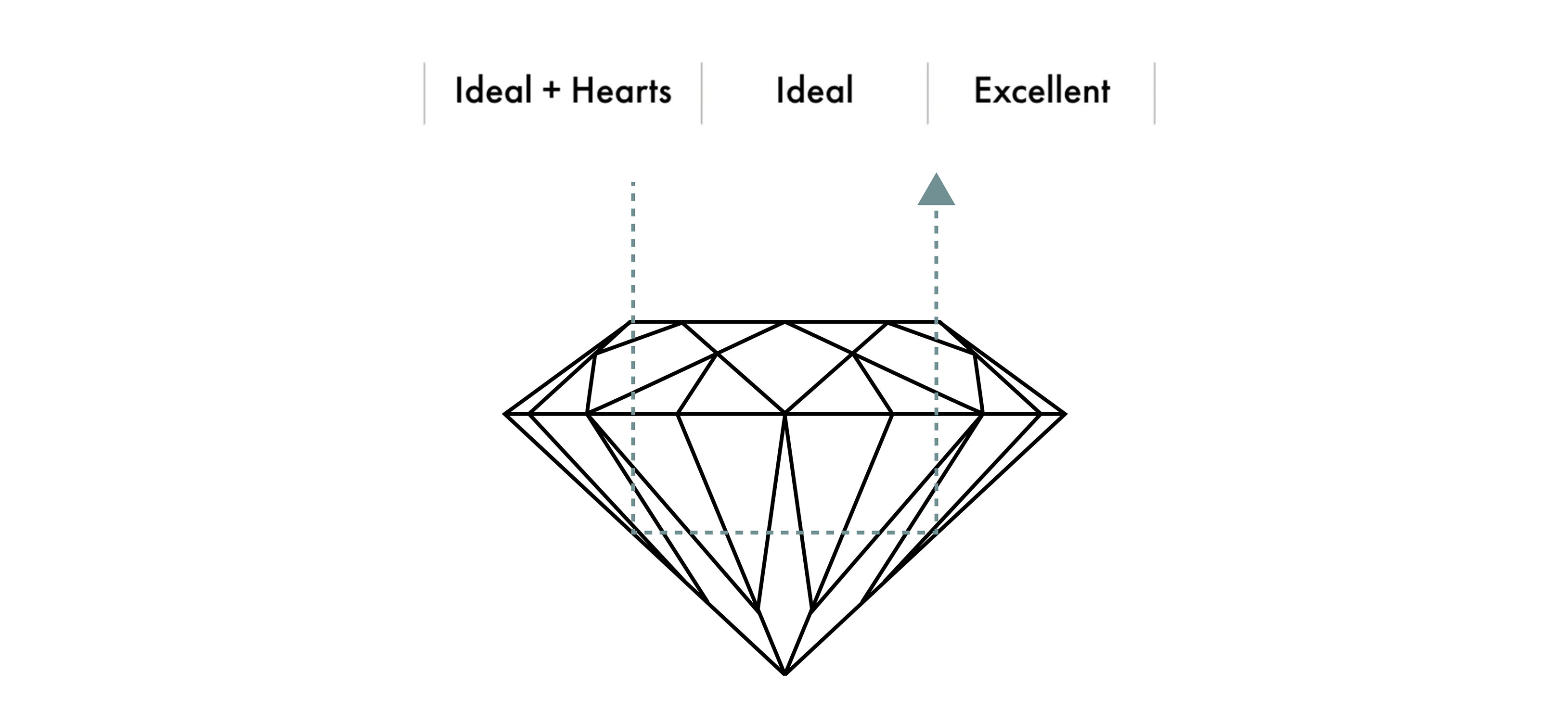
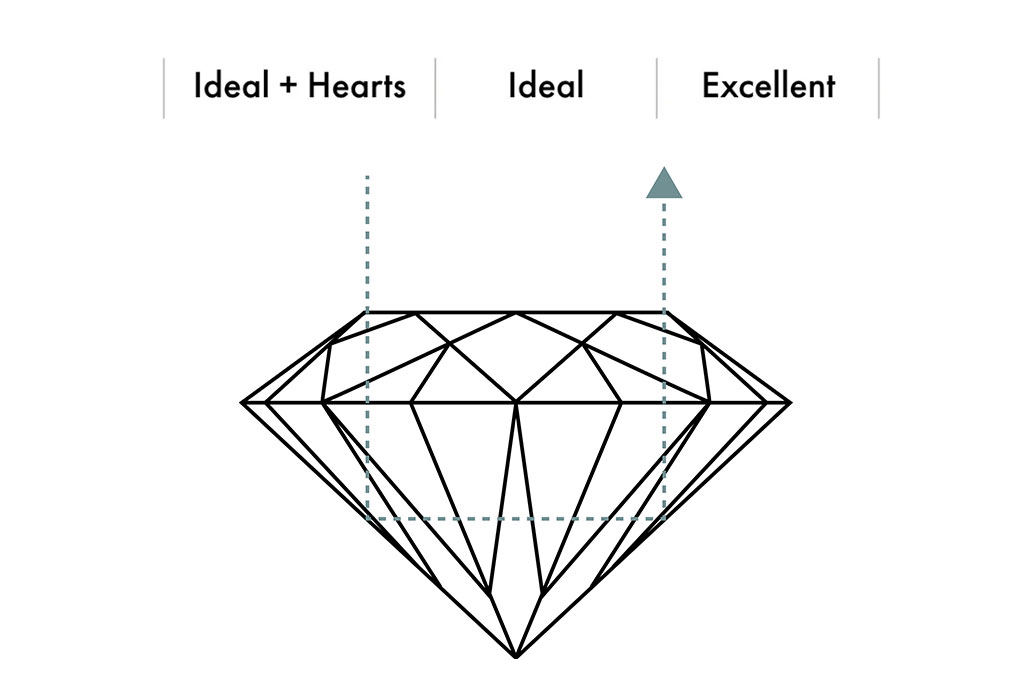
Color
The second most important of the 4Cs, color, is a reference to the absence of color in a diamond. Diamonds come in a variety of hues, but truly colorless white diamonds are rare, as most have a slight hint of yellow. The closer to colorless a white diamond is, the rarer and more valuable it becomes. Color impacts a diamond’s overall appearance. We offer colorless, near colorless and faintly colored VRAI created diamonds. At this level, color differences are difficult to detect unless compared side-by-side.
Starting from D, meaning colorless, the scale follows the alphabet downward. Colorless to near colorless diamonds appear clear on the scale, and sit in a range of D through J. Anything beyond J is where slight amounts of pale yellow begin to show through. Our VRAI created diamonds are primarily colorless or near colorless ranging from D-J on the color scale.
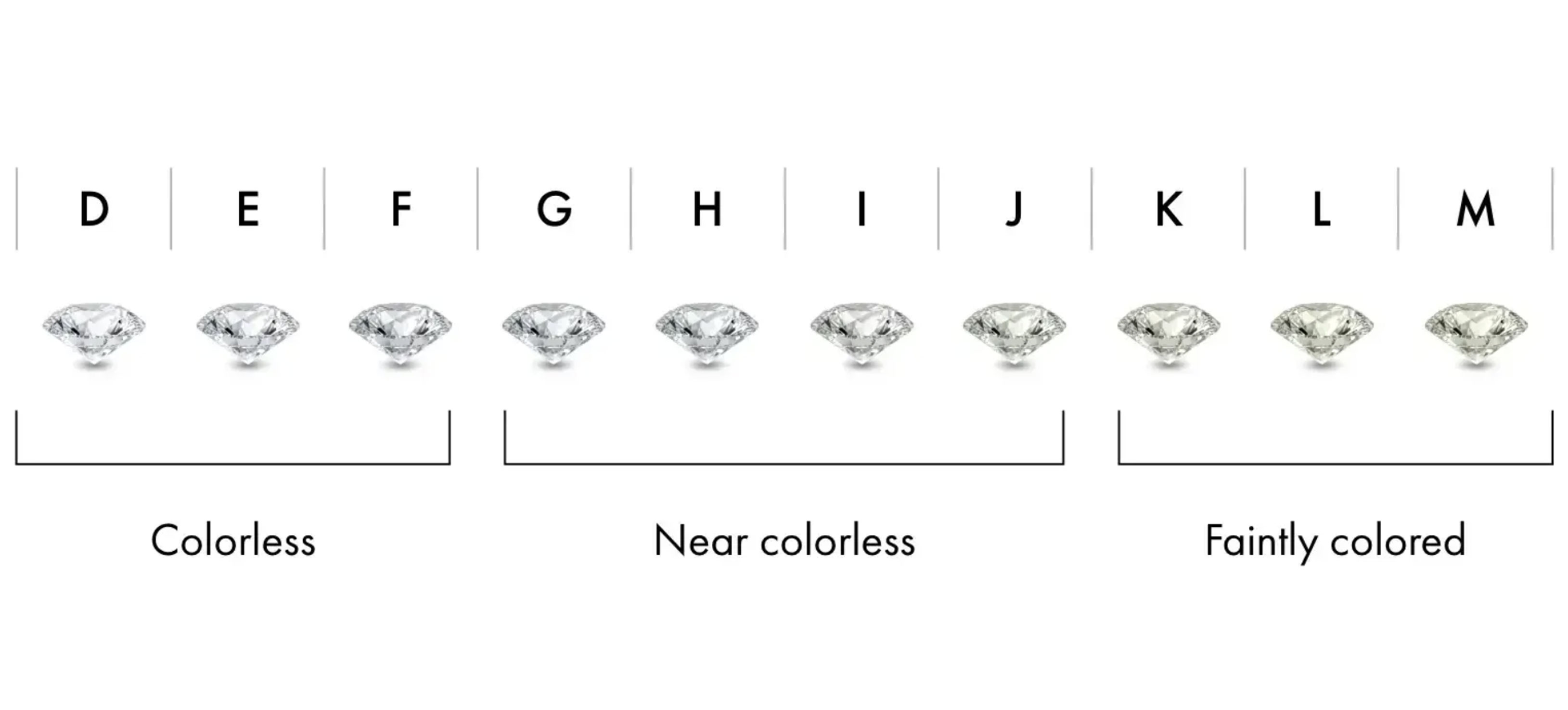
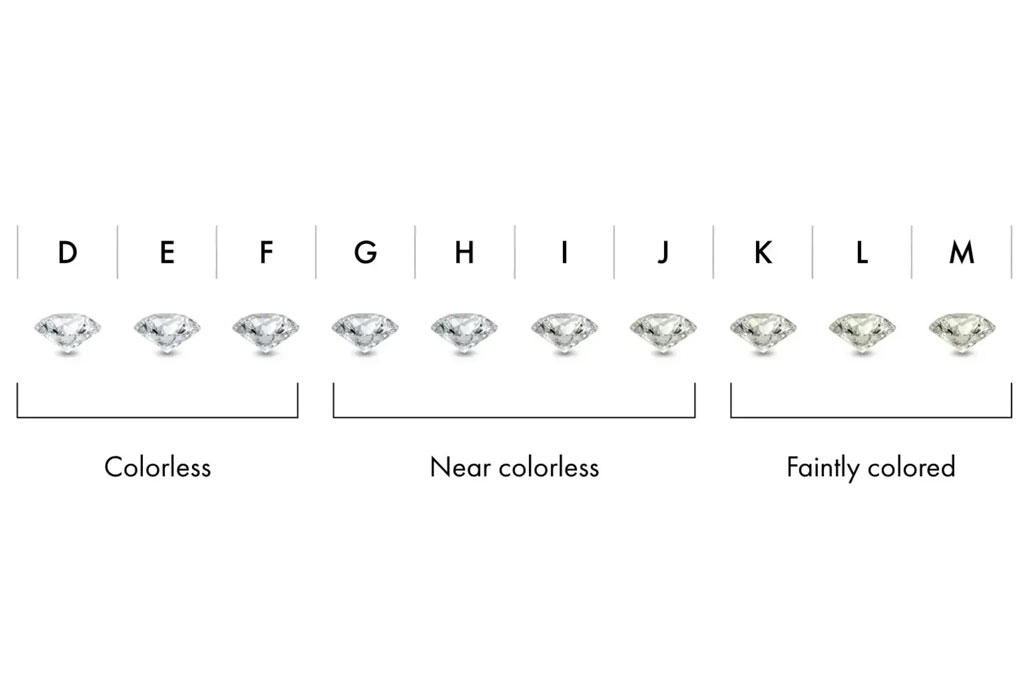
Clarity
A diamond’s clarity refers to the visual purity of a diamond. It’s determined by the number of inclusions or imperfections in the diamond and is difficult to notice without the help of a magnifier. These inclusions occur naturally during the diamond growth process and are what make each diamond unique. The internal spots and lines can affect how light passes through the stone, obstructing the refraction and return of light. This can impact how “cloudy” a diamond appears.
Five factors are considered when assigning a diamond’s clarity grade. The size and number of imperfections, their position within the diamond, how they impact its durability, and the noticeable contrast between the imperfections and the diamond itself. We offer a wide selection of diamonds sustainably created in our zero-emissions foundry with high clarity grades of VS2 and above that are without any eye-visible inclusions to deliver maximum brilliance. And for diamonds with clarity grades of SI1 and SI2, our graduate gemologists can provide an eye-clean assessment, as the visibility of the inclusions vary depending on the diamond cut and shape.
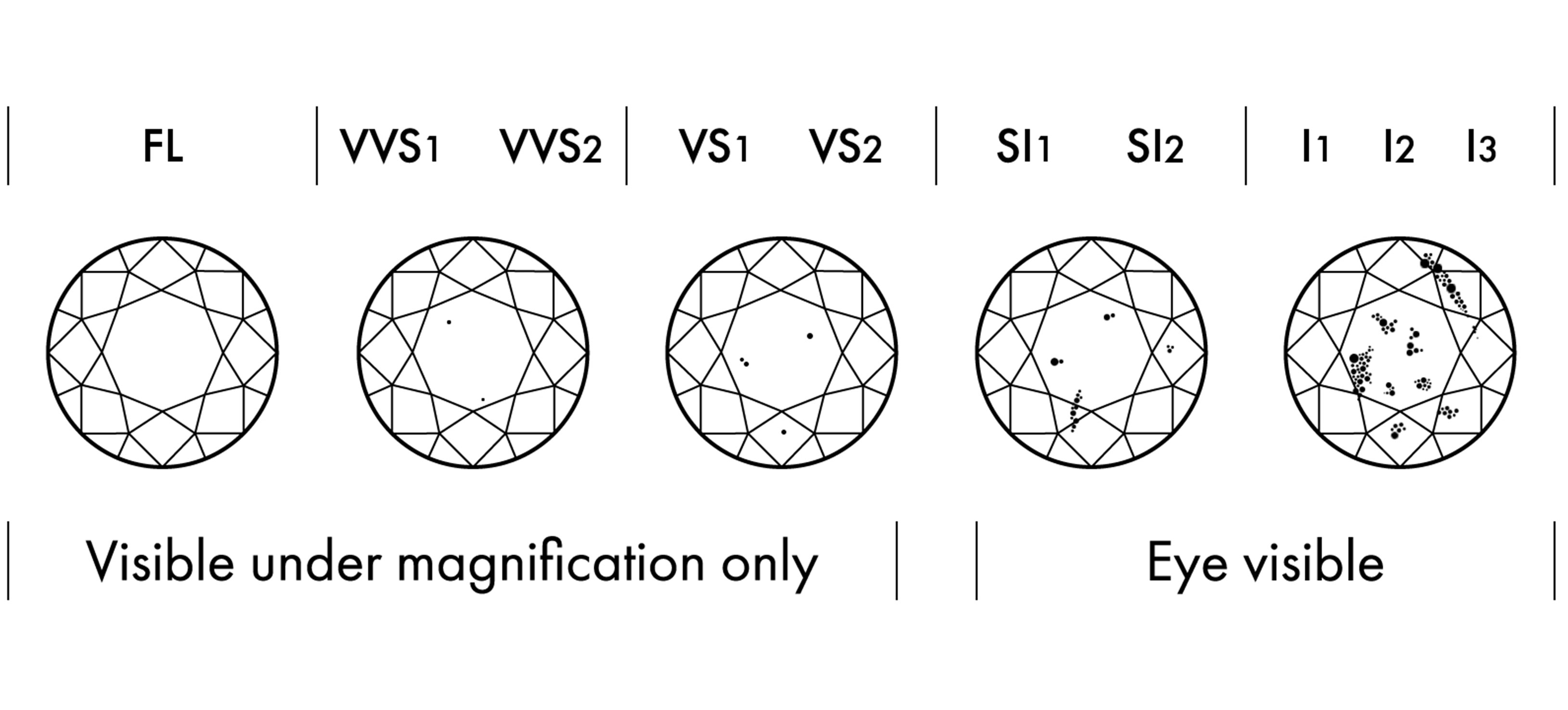
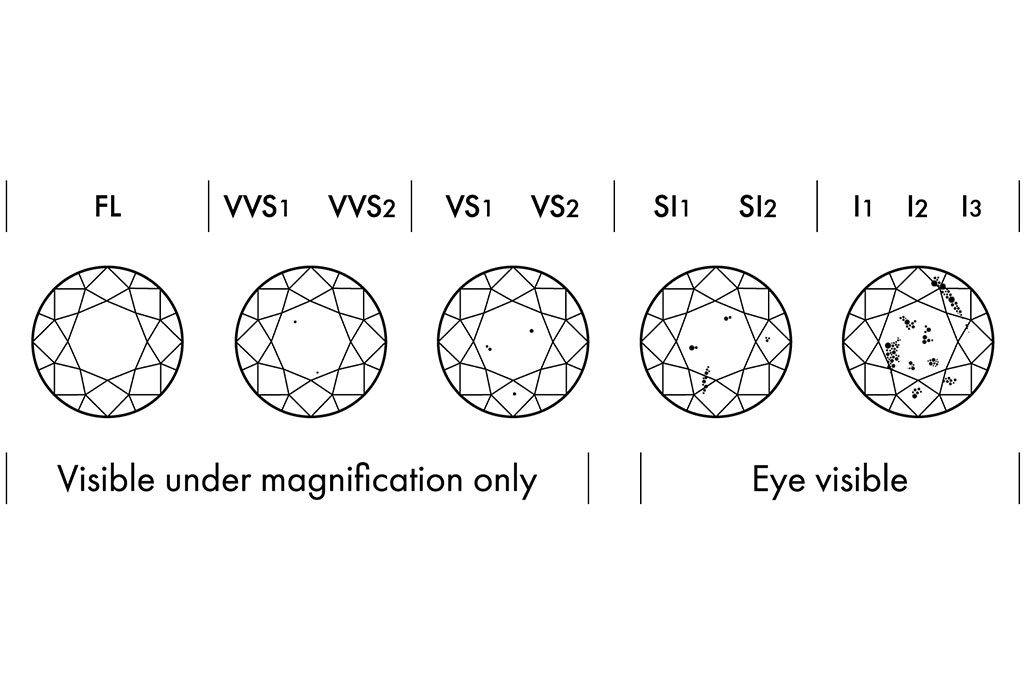
Carat
A diamond’s carat refers to its weight, not size. One diamond carat is equal to 0.2 grams—roughly the weight of a paperclip. If carat is the most well-known “C,” it is because it can look different from diamond to diamond and shape to shape. When it comes to carat weight, bigger isn’t always better because the way a diamond is cut is what influences its appearance. In fact, a higher carat diamond with a poor cut can appear smaller than a lower carat diamond with a high-quality cut. Our innovative technology allows us to create diamonds from less than a carat to more than 5 carats, which are then cut to maximize beauty at every carat weight.

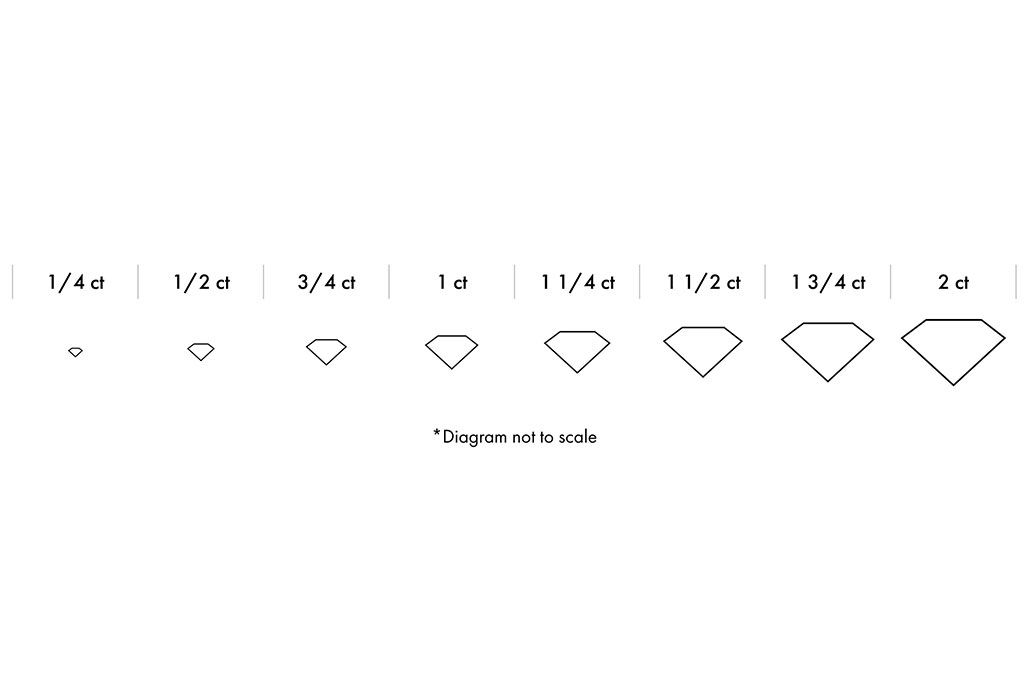
Our favorite “C” : Carbon Footprint
Our diamonds are sustainably created in our zero-emissions foundry. We are the one and only diamond producer in the world with zero carbon footprint. This achievement is made possible by utilizing hydropower, a clean and renewable source of energy. Our carbon footprint takes into account not only the impact of the growth process, but also the activity of our employees and day to day operations. We are experts when it comes to cut, color, clarity, and carat - but our zero carbon footprint is what we love sharing with you the most.
Atomically identical to those from the earth, our diamonds are a thoughtful reminder of your values and a symbol for a more ethical and sustainable future.